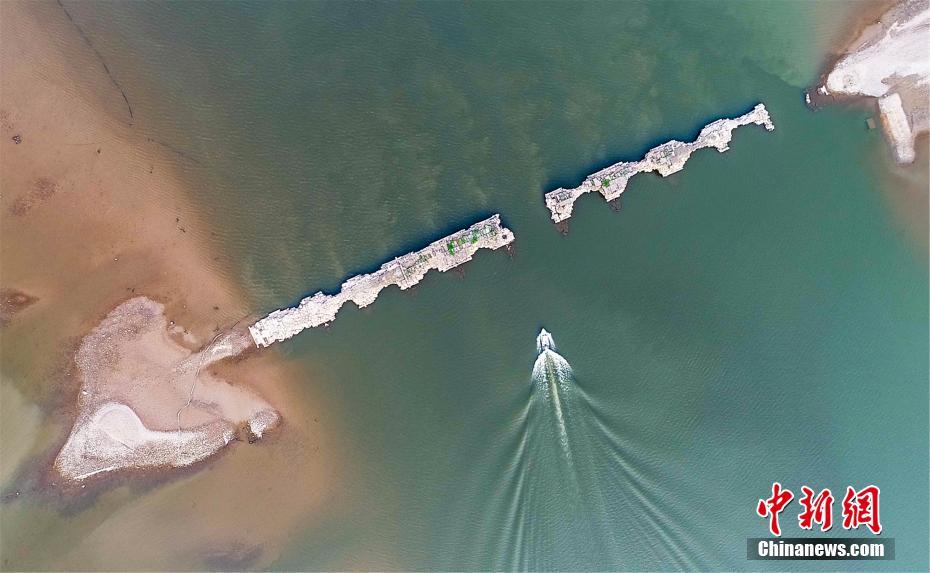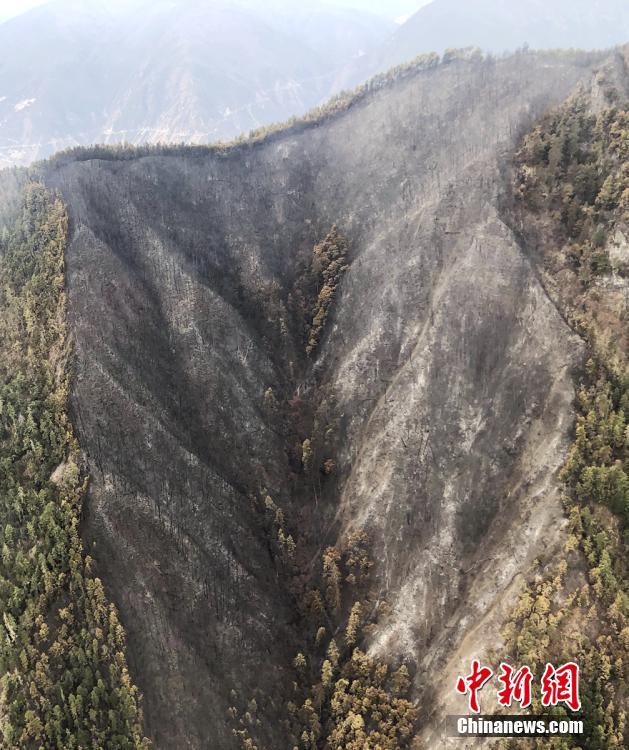
The world's major satellite navigation and positioning systems include the GPS system of the United States, the Galileo satellite navigation system, Russia Ross GLONASS System, China BeiDou Satellite Navigation System. GPS is a new generation of space satellite navigation and positioning system jointly developed by the U.S. Army, Sea and Air Force in the 1970s.
There are four major global satellite navigation systems in the world, namely, the Global Positioning System of the United States (GPS), the Glonas Satellite Navigation and Positioning System of Russia (GLONASS), the European Galileo Satellite Navigation and Positioning System (Galileo), and the China Beidou Satellite Navigation System (BDS ).
The world's four major satellite positioning systems are: the Global Positioning System (GPS) of the United States, the Russian "Glonas" system, the "Galileo" system of Europe and the "Beidou" system of China. GPS was developed by the U.S. military in the 1970s and completed in 1994, with 24 working satellites and 4 backup satellites.
The general term of the Global Positioning System is GNSS, and the corresponding GNSS module refers to the positioning and navigation module of the receiver type covering multiple satellite positioning systems of GPS, Beidou, GALILEO and GLONASS.
1. Satellite positioning adopts the principle of triangulation to determine the position by the help of the distance measurement signal emitted by the satellite.Place, that is, the satellite in space as a known point, measures the distance from the satellite to the ground point, and then determines the position of the receiving device on the surface of the earth or in the air through the distance.
2. The principle of satellite navigation is: Doppler speed measurement positioning: the "Meridian" satellite navigation system adopts this method. The user positioning device measures the Doppler frequency shift curve according to the Doppler frequency shift between the signal frequency received from the navigation satellite and the signal frequency sent on the satellite.
3. The principle of satellite navigation is that each navigation satellite constantly transmits its own precise location with time to the ground. After receiving this information, the satellite positioning receivers on airplanes, ships and other vehicles will quickly calculate their own position, so as to achieve the purpose of navigation.
4. GPS navigation systemThe basic principle of integration is to measure the distance between the satellite of the known location and the user's receiver, and then combine the data of multiple satellites to know the specific location of the receiver.

1. GPS, China BeiDou Satellite Navigation System, Glonas, Galileo Satellite Navigation System.GPS is the abbreviation of Global Positioning System in English, and it is abbreviated as "ball position system" in English.
2. The GPS system of the United States. GPS is the abbreviation of Global Positioning System in English, and it is abbreviated as "ball position system" in English. GPS is a new generation of space satellite navigation and positioning system jointly developed by the U.S. Army, Navy and Air Forces in the 1970s. Galileo satellite navigation system.
3. BeiDou satellite navigation system is a satellite navigation system independently built and operated by the People's Republic of China. It can provide global users with round-the-clock, all-clock and high-precision positioning, navigation and timing services.The development of the BeiDou system is divided into three generations, and now it has developed into the third generation of BeiDou satellite navigation system to serve the world.
4. The world's major satellite navigation and positioning systems include GPS of the United States, Russia's Glonas Satellite Navigation System (GLONASS), the European Union's Galileo Satellite Navigation System (GALILEO) and China's BeiDou Satellite Navigation System (BDS) .
5. The world's major satellite positioning systems include: Beidou Satellite Navigation System (BDS), Galileo Satellite Navigation System (GALILEO), GLONASS and GPS.
6. The general name of the global positioning system is GNSS, and the corresponding GNSS module refers to the positioning and navigation module of the receiver type covering multiple satellite positioning systems of GPS, Beidou, GALILEO and GLONASS.
1. As of December 17, 2020, the world's four major positioning systems: GPS satellite navigation system, GLONASS navigation system, Beidou navigation system, and Galileo navigation system.
2. There are four major global satellite navigation systems in the world, namely, the American Global Positioning System (GPS), the Russian Glonas Satellite Navigation and Positioning System (GLONASS), the European Galileo Satellite Navigation and Positioning System (Galileo), and the Chinese Beidou Satellite Navigation System (B DS).
3. At present, there are 4 major satellite positioning systems in the world. They are: BeiDou SatelliteNavigation system (BDS), Galileo satellite navigation system (GALILEO), GLONASS and GPS.
4. At present, there are four satellite navigation and positioning systems that have been installed and applied in the world. The second-generation global satellite radio navigation system GPS set up in the United States. The space part includes 24 satellites distributed in 6 orbits, with an altitude of about 20,200km and a running speed of 3,800m/s.
5. The world's four major satellite positioning systems are: the United States Global Positioning System (GPS), Russia's "Glonas" system, Europe's "Galileo" system and China's "Beidou" system. GPS was developed by the U.S. military in the 1970s and completed in 1994, with 24 working satellites and 4 backup satellites.
global goods transport-APP, download it now, new users will receive a novice gift pack.
The world's major satellite navigation and positioning systems include the GPS system of the United States, the Galileo satellite navigation system, Russia Ross GLONASS System, China BeiDou Satellite Navigation System. GPS is a new generation of space satellite navigation and positioning system jointly developed by the U.S. Army, Sea and Air Force in the 1970s.
There are four major global satellite navigation systems in the world, namely, the Global Positioning System of the United States (GPS), the Glonas Satellite Navigation and Positioning System of Russia (GLONASS), the European Galileo Satellite Navigation and Positioning System (Galileo), and the China Beidou Satellite Navigation System (BDS ).
The world's four major satellite positioning systems are: the Global Positioning System (GPS) of the United States, the Russian "Glonas" system, the "Galileo" system of Europe and the "Beidou" system of China. GPS was developed by the U.S. military in the 1970s and completed in 1994, with 24 working satellites and 4 backup satellites.
The general term of the Global Positioning System is GNSS, and the corresponding GNSS module refers to the positioning and navigation module of the receiver type covering multiple satellite positioning systems of GPS, Beidou, GALILEO and GLONASS.
1. Satellite positioning adopts the principle of triangulation to determine the position by the help of the distance measurement signal emitted by the satellite.Place, that is, the satellite in space as a known point, measures the distance from the satellite to the ground point, and then determines the position of the receiving device on the surface of the earth or in the air through the distance.
2. The principle of satellite navigation is: Doppler speed measurement positioning: the "Meridian" satellite navigation system adopts this method. The user positioning device measures the Doppler frequency shift curve according to the Doppler frequency shift between the signal frequency received from the navigation satellite and the signal frequency sent on the satellite.
3. The principle of satellite navigation is that each navigation satellite constantly transmits its own precise location with time to the ground. After receiving this information, the satellite positioning receivers on airplanes, ships and other vehicles will quickly calculate their own position, so as to achieve the purpose of navigation.
4. GPS navigation systemThe basic principle of integration is to measure the distance between the satellite of the known location and the user's receiver, and then combine the data of multiple satellites to know the specific location of the receiver.

1. GPS, China BeiDou Satellite Navigation System, Glonas, Galileo Satellite Navigation System.GPS is the abbreviation of Global Positioning System in English, and it is abbreviated as "ball position system" in English.
2. The GPS system of the United States. GPS is the abbreviation of Global Positioning System in English, and it is abbreviated as "ball position system" in English. GPS is a new generation of space satellite navigation and positioning system jointly developed by the U.S. Army, Navy and Air Forces in the 1970s. Galileo satellite navigation system.
3. BeiDou satellite navigation system is a satellite navigation system independently built and operated by the People's Republic of China. It can provide global users with round-the-clock, all-clock and high-precision positioning, navigation and timing services.The development of the BeiDou system is divided into three generations, and now it has developed into the third generation of BeiDou satellite navigation system to serve the world.
4. The world's major satellite navigation and positioning systems include GPS of the United States, Russia's Glonas Satellite Navigation System (GLONASS), the European Union's Galileo Satellite Navigation System (GALILEO) and China's BeiDou Satellite Navigation System (BDS) .
5. The world's major satellite positioning systems include: Beidou Satellite Navigation System (BDS), Galileo Satellite Navigation System (GALILEO), GLONASS and GPS.
6. The general name of the global positioning system is GNSS, and the corresponding GNSS module refers to the positioning and navigation module of the receiver type covering multiple satellite positioning systems of GPS, Beidou, GALILEO and GLONASS.
1. As of December 17, 2020, the world's four major positioning systems: GPS satellite navigation system, GLONASS navigation system, Beidou navigation system, and Galileo navigation system.
2. There are four major global satellite navigation systems in the world, namely, the American Global Positioning System (GPS), the Russian Glonas Satellite Navigation and Positioning System (GLONASS), the European Galileo Satellite Navigation and Positioning System (Galileo), and the Chinese Beidou Satellite Navigation System (B DS).
3. At present, there are 4 major satellite positioning systems in the world. They are: BeiDou SatelliteNavigation system (BDS), Galileo satellite navigation system (GALILEO), GLONASS and GPS.
4. At present, there are four satellite navigation and positioning systems that have been installed and applied in the world. The second-generation global satellite radio navigation system GPS set up in the United States. The space part includes 24 satellites distributed in 6 orbits, with an altitude of about 20,200km and a running speed of 3,800m/s.
5. The world's four major satellite positioning systems are: the United States Global Positioning System (GPS), Russia's "Glonas" system, Europe's "Galileo" system and China's "Beidou" system. GPS was developed by the U.S. military in the 1970s and completed in 1994, with 24 working satellites and 4 backup satellites.
Segmenting data by HS code and region
author: 2024-12-24 02:11Global trade metadata enrichment
author: 2024-12-24 01:58Industry-level trade feasibility studies
author: 2024-12-24 00:49Latin America HS code classification
author: 2024-12-24 00:43Real-time customs clearance alerts
author: 2024-12-24 00:42Predictive analytics for supplier risks
author: 2024-12-24 02:04HS code-based risk profiling for exporters
author: 2024-12-24 02:02Trade data for resource allocation
author: 2024-12-23 23:53Sustainable supply chain analytics
author: 2024-12-23 23:35 Furniture trade (HS code ) insights
Furniture trade (HS code ) insights
418.39MB
Check Trade data for food and beverage industry
Trade data for food and beverage industry
815.78MB
Check Comparative trade route analysis
Comparative trade route analysis
472.27MB
Check HS code integration in trade blockchains
HS code integration in trade blockchains
488.84MB
Check Furniture imports HS code analysis
Furniture imports HS code analysis
553.88MB
Check Trade data-driven policy analysis
Trade data-driven policy analysis
842.41MB
Check Global trade data normalization
Global trade data normalization
311.63MB
Check HS code-driven customs risk scoring
HS code-driven customs risk scoring
682.29MB
Check Latin America HS code compliance tips
Latin America HS code compliance tips
587.93MB
Check International trade KPI tracking
International trade KPI tracking
574.84MB
Check Top global trade data insights
Top global trade data insights
299.71MB
Check Trade flow analysis by HS code category
Trade flow analysis by HS code category
286.89MB
Check Real-time import export alerts
Real-time import export alerts
488.23MB
Check Global trade compliance playbooks
Global trade compliance playbooks
613.47MB
Check Dynamic import export performance metrics
Dynamic import export performance metrics
966.51MB
Check How to interpret trade deficit data
How to interpret trade deficit data
489.57MB
Check Metal commodities HS code directory
Metal commodities HS code directory
254.14MB
Check Importer data
Importer data
792.45MB
Check Leather goods HS code classification
Leather goods HS code classification
958.91MB
Check Trade data for GDP correlation analysis
Trade data for GDP correlation analysis
839.15MB
Check Sustainable supply chain analytics
Sustainable supply chain analytics
766.44MB
Check Pharma active ingredients HS code checks
Pharma active ingredients HS code checks
219.17MB
Check APAC trade flows by HS code
APAC trade flows by HS code
745.23MB
Check How to adapt to shifting trade policies
How to adapt to shifting trade policies
359.11MB
Check HS code alignment with logistics software
HS code alignment with logistics software
632.68MB
Check How to simplify export documentation
How to simplify export documentation
919.69MB
Check Engine parts HS code verification
Engine parts HS code verification
219.24MB
Check Processed grains HS code references
Processed grains HS code references
432.36MB
Check Engine parts HS code verification
Engine parts HS code verification
533.73MB
Check How to access protected trade databases
How to access protected trade databases
136.91MB
Check Global trade compliance best practices
Global trade compliance best practices
148.89MB
Check Locating specialized suppliers by HS code
Locating specialized suppliers by HS code
228.36MB
Check Data-driven multimodal transport decisions
Data-driven multimodal transport decisions
656.54MB
Check Global trade route simulation
Global trade route simulation
757.92MB
Check Fisheries products HS code classification
Fisheries products HS code classification
736.57MB
Check Industrial chemicals HS code monitoring
Industrial chemicals HS code monitoring
674.53MB
Check
Scan to install
global goods transport to discover more
Netizen comments More
1893 Predictive models for trade demand
2024-12-24 01:36 recommend
1092 Real-time cargo route adjustments
2024-12-24 01:12 recommend
328 High-tech exports HS code categorization
2024-12-24 01:09 recommend
53 Customizable trade data dashboards
2024-12-24 01:08 recommend
62 Predictive trade compliance scoring
2024-12-23 23:45 recommend